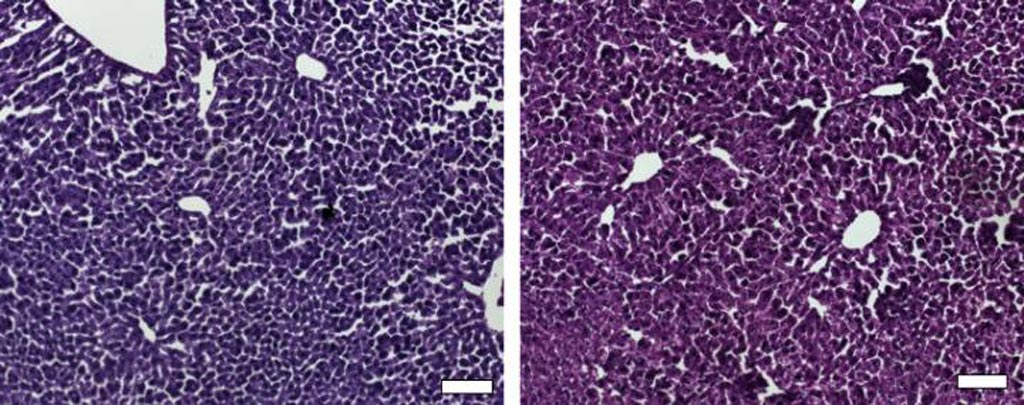Model Demonstrates Potential for Long-Term Gene Silencing
By LabMedica International staff writers
Posted on 09 May 2018
An adeno-associated viral (AAV) vector was used to deliver a modified version of the CRISPR/Cas9 gene-editing tool to liver cells in a mouse model, which resulted in suppression of the serum enzyme Pcsk9 and reduction of cholesterol levels.Posted on 09 May 2018
CRISPR/Cas9 is regarded as the cutting edge of molecular biology technology. CRISPRs (clustered regularly interspaced short palindromic repeats) are segments of prokaryotic DNA containing short repetitions of base sequences. Each repetition is followed by short segments of "spacer DNA" from previous exposures to a bacterial virus or plasmid. Since 2013, the CRISPR/Cas9 system has been used in research for gene editing (adding, disrupting, or changing the sequence of specific genes) and gene regulation. By delivering the Cas9 enzyme and appropriate guide RNAs (sgRNAs) into a cell, the organism's genome can be cut at any desired location. The conventional CRISPR/Cas9 system is composed of two parts: the Cas9 enzyme, which cleaves the DNA molecule and specific RNA guides that shepherd the Cas9 protein to the target gene on a DNA strand. The system has subsequently been engineered to not only locate and cut specific sequences of DNA, but rather to turn on or off the expression of targeted genes without making permanent changes to the DNA coding sequence.

Image: Histological sections of liver from control mice treated with saline (left) and the CRISPR/Cas9 epigenetic repression system in which cholesterol levels were lowered (right) show generally normal and healthy tissue (Photo courtesy of Dr. Charles Gersbach, Duke University).
To accommodate the limited capacity of the AAV, investigators at Duke University (Durham, NC, USA) replaced the commonly used Cas9 enzyme from Streptococcus pyogenes with a smaller Cas9 enzyme from Staphylococcus aureus. The system was further modified by deactivating the DNA-cutting function of Cas9, creating non-catalytic version of the enzyme dCas9, which bound to the target DNA sequence but did not excise it. The dCas9 was combined with a KRAB (Krüppel associated box) protein that blocked gene expression, creating a CRISPR/Cas9 repressor that blocked transcription, reduced chromatin accessibility, and silenced gene expression without altering the underlying DNA sequence.
The investigators reported in the April 26, 2018, online edition of the journal Nature Communication that to evaluate dCas9KRAB efficacy for gene silencing in vivo, they silenced transcription of Pcsk9 (Proprotein convertase subtilisin/kexin type 9), a regulator of cholesterol levels, in the liver of adult mice.
Systemic administration of a dual-vector AAV system expressing dCas9KRAB and a Pcsk9-targeting guide RNA (gRNA) resulted in significant reductions of serum Pcsk9 and cholesterol levels. Despite a moderate host immune response to dCas9KRAB expression, Pcsk9 repression was maintained for 24 weeks after a single treatment, demonstrating the potential for long-term gene silencing in living tissues with dCas9KRAB.
"We previously used these same types of tools to turn genes on and off in cultured cells and we wanted to see if we could also deliver them to animal models with an approach that is relevant for gene therapy," said senior author Dr. Charles Gersbach, professor of biomedical engineering at Duke University. "We wanted to change the genes in a way that would have a therapeutic outcome, and Pcsk9 is a useful proof-of-concept given its role regulating cholesterol levels, which in turn affect health issues like heart disease."
It is clear that immune response is an important issue," said Dr. Gersbach. "Although we did see an immune response in the mice when we administered Cas9, the levels of liver enzymes in the serum seemed to mitigate over time without any intervention, and the effect of Pcsk9 repression was sustained regardless."
Related Links:
Duke University













